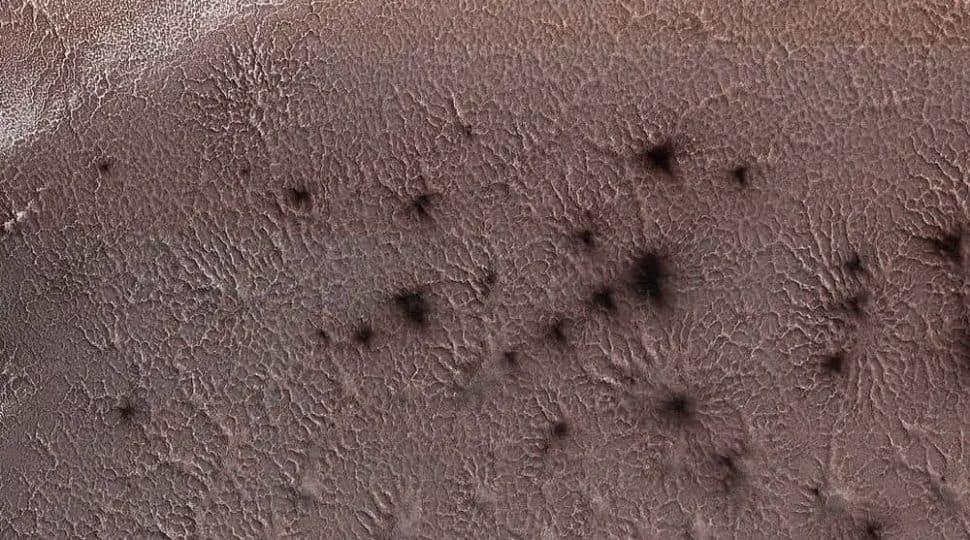Mars has been grabbing human curiosity for a great period of time. Recently NASA has sent images from the red planet which has gone viral. Humans are searching for water on Mars and people like Elon Musk are determined to colonise Mars in the next few years. Scientists have found spiders on the red planet.
Spiders or also knows as the Araneiforms, the strange-looking negative topography radial system of the dendritic troughs. These patterns resemble the tree branches. Araneiforms or spiders are not found on Earth. They are exclusive to the surface of Mars and are formed when dry ice changes directly from solid to a gaseous state in the spring. The process where dry ice is converted from a solid to a gaseous state is called sublimating.
The team of HiRise camera, run out of the University of Arizona shared a picture on Twitter.
NEW: Thousands of Spiders on Mars — The folks at @Planet_Four have helped us catalog these wonderful features.
NASA/JPL/University of Arizonahttps://t.co/Pwjxsl2DUr pic.twitter.com/wEdwcXJXiX
— HiRISE: Beautiful Mars (NASA) (@HiRISE) September 19, 2018
The Trinity College team along with Durham University and Open University conducted a number of experiments that were funded by the Irish Research Council and Europlanet at the Open University Mars Simulation Chamber, under the Martian atmospheric pressure, in order to investigate whether could be formed by dry ice sublimation.
The findings of this experiment have been published in the Nature Journal Scientific Report which says, "The formation of Araneiformsby Carbon Dioxide Vending and Vigorous Sublimation Dynamics Under Martian Atmospheric Pressure."
“This research presents the first set of empirical evidence for a surface process that is thought to modify the polar landscape on Mars. Kieffer’s hypothesis [explained below] has been well-accepted for over a decade, but until now, it has been framed in a purely theoretical context. … The experiments show directly that the spider patterns we observe on Mars from orbit can be carved by the direct conversion of dry ice from solid to gas. It is exciting because we are beginning to understand more about how the surface of Mars is changing seasonally today," said Dr Lauren McKeown who led this work during her PhD at Trinity and is now with Open University.
Recently, NASA's Perseverance rover landed on Mars on February 18.
















